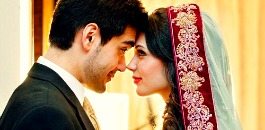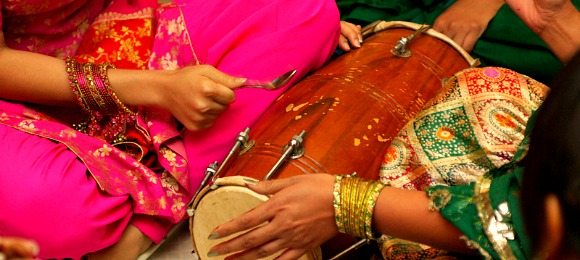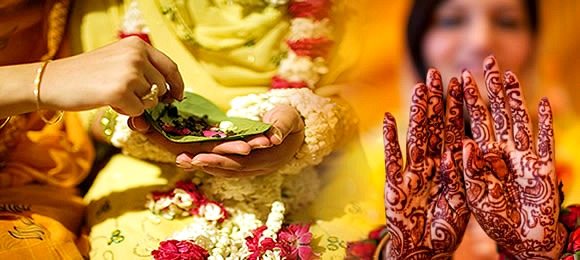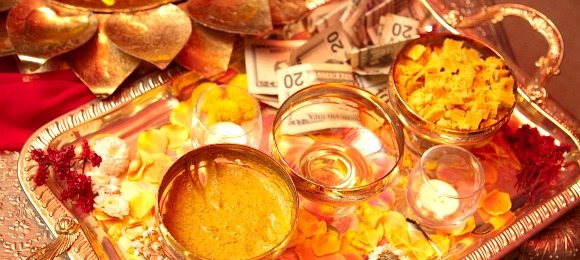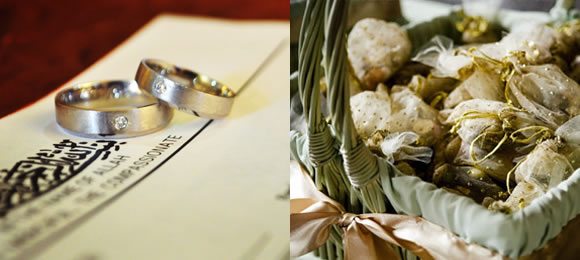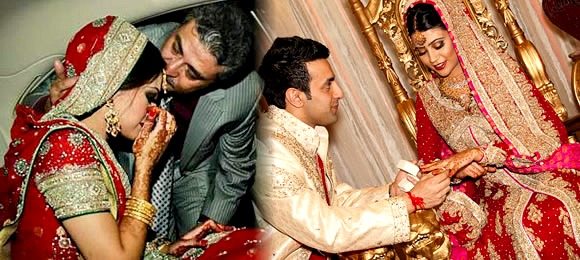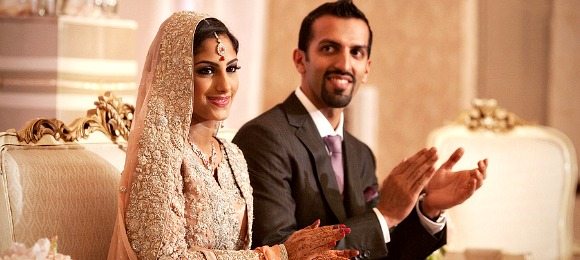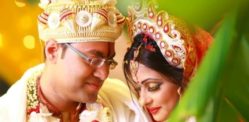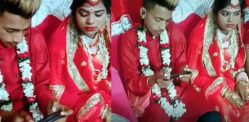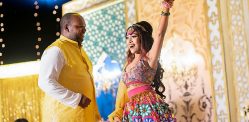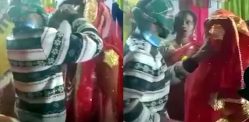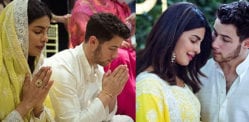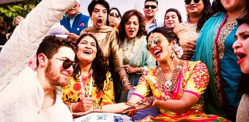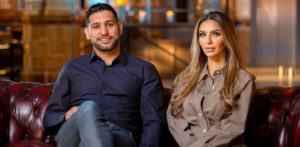The purpose is to make the bride and groom feel special, and celebrate whole-heartedly.
Pakistani weddings are definitely the most fun events and celebrations to attend. Everyone struts out in his or her dazzling outfit, and large families gather together ready for the organised chaos that comes with wedding planning.
Pakistani weddings are made up of a series of celebratory events – all of which complete the marital package with a touch of ‘chatkhara’. As soon as the wedding season arrives, preparations start all around for brides and grooms to be.
The Pakistani wedding ceremony is definitely enjoyed even more enthusiastically by British Asians, who have stayed true to their cultural roots. Attend any British Pakistani wedding and you will feel right at home with the food, dancing and masti.
Dholkis
Pakistani wedding events usually start out with a lot of singing and entertainment and a good old Dholki session at home. Dholkis are usually held at houses where friends and family of the bride and groom gather for some pre-celebrations.
Singing, dancing, and just usual gupshup are part of dholki sessions. The dhol, a large skinned drum, is played along with a metal spoon. Ladies of the family gather around in a circle around the dhol and sing traditional Bollywood and Mehndi songs about the bride and groom.
Mehndi
Next up is usually one of the most awaited events, the Rasm e Mehndi. Mehndis are usually the most anticipated events, because they are supposed to be the most fun-filled events of the entire wedding. Usually it depends upon the preferences of people, but mehndis are mostly are filled with dance numbers.
Youngsters prepare dances for mehndis which are usually presented to the couple. Often times couples will dance on their mehndi’s too. Elders will put mehndi and oil on leaves in the bride and groom’s hands, and feed them mithai.
The traditional colour for mehndi is yellow. The bride is supposed to wear yellow clothes, or have a touch of yellow in her outfit. Along with that her hands are covered with different designs of henna. Some brides also prefer their arms and feet to be covered with beautiful henna designs.
Over the years, trends have started to change. Now mehndis are not based on the colour yellow. In fact now there are different themed mehndis, such as peacock themed or Mughal tradition themed. This does give a twist to the traditional mehndi styles, but makes it all fun too.
The groom usually wears a shalwar kurta on his mehndi. Often times, colourful neck scarves are also worn by the groom and boys attending the mehndi. The music chosen for mehndi events is always fast and groovy.
Mayun
Moving on, there is the event of the Mayun which takes place before the wedding day. This is basically a beautification tradition in which some oil and a yellow paste is applied onto the bride’s skin.
The paste is made from turmeric and sandalwood powder and other herbs and aromatic oils. The groom’s mother and sister usually bring this to put onto the bride. The groom’s sister or closest female relative also attaches a gana or a thick garland string onto the bride’s arm.
The mayun is also an excuse to get together with lots of music, dancing, chatter and food. The make-up for the bride for such an event is usually kept light and simple. Mayuns are also mostly held at home. Other traditions are braiding the bride’s hair etc. All such traditions definitely lighten up the wedding mood.
Nikkah
The most important part of the whole ceremony is the Nikkah. Here the exchanging of the vows and the acceptance of marriage by both the bride and groom takes place. The nikkah is the most sacred matrimonial tie between a man and a woman. It forms an everlasting relationship between two people on the basis of two words, “I do”, said thrice by each of them.
The couple also sign the marriage contract or Nikkah-naama which contains all the terms and conditions agreed by both sides which they have to adhere too. Usually the fathers of both the bride and groom will stand as witnesses. Immediately following this, the groom’s side hand out wedding favours, or bidh, to all the guests.
People prefer to hold the Nikkah at different times, usually however it is after the mehndi and other pre-celebrations and before the Baraat ceremony.
Baraat
The Baraat comes next, which involves the ‘departing ceremony’ for the bride following the arrival of the groom in a procession to take her away. This event is held and organised by the bride’s family.
The most important part of the baraat is the Rukhsati. It can rather be a sad moment for the family of the bride, and the bride herself. The food on baraat is usually lavish and rich. Pakistani food items usually include pulao, biryani, chicken curry, kebabs etc. Kheers and halwas are usually part of desserts.
Baraats can be rather stressful occasions for the bride and her family. This is because it is a kind of goodbye between them. Also stress gets built up from all past preparations and events, which adds to it. Slow music is usually played on baraats. More focus is made on the décor and presentation of the event. Such is done because a lot of pictures are to be taken on Baraat day.
All in all, baraats are fun events with a little touch of teary and emotional moments. The most painful moment is when the father of the bride sends off his daughter to a completely new home and environment.
Walima
The last main event is the Walima. This event is a grand dinner and reception hosted by the groom. This event is usually all about putting an end to the long series of wedding events, and to say thanks to guests and family. The dress and make-up of this event for the bride is usually chosen by the groom’s side. The food on the walima is almost the same as the baraat. The focus on this event is again on picture taking and just light gupshup.
When the walima is over, the wedding officially comes to an end. After this, the series of dinners and lunches start for the fresh couple. Makhlawa is one of them, where all family members and friends invite the newlywed couple to different dinners, lunches and brunches.
All of these events combined are what make the Pakistani wedding ceremony unique. The purpose of them is to make the bride and groom feel special, and to celebrate their future marriage wholeheartedly. So what are you doing for the upcoming wedding of a loved one?



















































